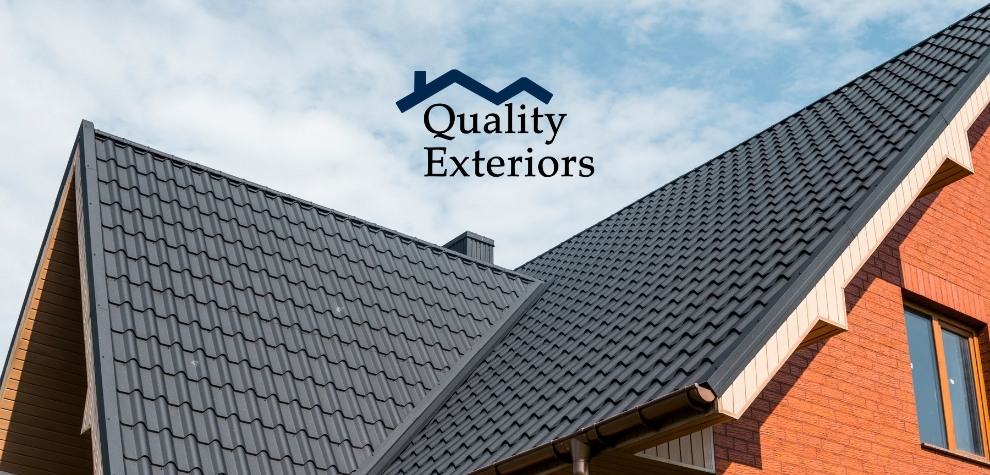Every year, an increasing number of homeowners choose to install metal roofing—and it’s no wonder! With the long list of benefits that come with metal roof installation, you may find that not many other roofing options can compare. As with any kind of construction project, there are a lot of questions floating around in regard to metal roofing and what makes it such a hot commodity these days. Things such as maintenance, energy efficiency, and cost of installation and upkeep are some of the areas that our clients commonly inquire about.
In response, we decided to compile a list of your frequently asked questions regarding metal roof installation and answer them all in one sitting. In addition, we’ll also provide a brief overview of how to install metal roofing. However, if, after reading, you still have questions or concerns about installing metal roofing to your home or business, please feel free to call the professional Louisiana roofing contractors at Quality Exteriors at 318-747-1254 today.
Installing Metal Roofing? Here’s What You Need to Know
Metal roof installation can be one of the safest and most cost-effective methods of protecting your home or business. Not only is it a wise investment for your home and budget, but metal roofing is also great for the environment. In fact, metal roofs are one of the most energy-efficient materials for roofing currently on the market. Better heat reflection from the sun, an ultra-long lifespan, and a clean, smooth, attractive surface that contributes to the value of your home or building are just a few of its many advantages. Still not convinced? Read on to see why metal roofing may be a great option for you.
Is Metal Roofing Energy Efficient?
As we mentioned before, metal roofing is one of the most energy-efficient options for roofing materials out there. Because the roof of a building is exposed to the sun more than any other structural element, the material used is an incredibly important consideration in terms of energy efficiency. Metal roofs are so energy-efficient because they reflect heat away from the home. Other roofing materials—such as asphalt—actually absorb the heat energy and transfer it downward into the home, significantly increasing energy and cooling costs. Statistically speaking, a high-quality metal roofing system may save homeowners up to 40% on their energy bills.
Are Metal Roofs Noisy?
Metal roofs are frequently miscategorized as being loud or noisy. We all know the sound of rain, or even worse, hail, hitting metal. Anyone who is familiar with structures in which you can see the metal from both sides, such as a barn, is also likely familiar with that pinging sound. However, metal roof installation is quite different on a home or building than it is on a structure like a barn. As such, outside elements like rain are typically no noisier on a metal roof than they are on your standard shingled roof.
Here’s the difference: In residential homes and commercial buildings, metal roofing is placed atop a plywood deck, much like 3-tab shingles are. This solid roof deck acts as a sort of noise-canceling barrier between the roof and the inside of the home. So while metal roofs installed without a roof deck in between are typically very noisy in bad weather, those that are properly installed above insulation or solid plywood sheathing are not.
What Are the Benefits of Metal Roofing?
Today’s metal roofs provide individuals with the opportunity to enhance their homes or businesses with long-lasting solutions. While conventional roofs rapidly lose their value as they age, metal roofs offer a number of long-term advantages. To begin, metal roofs have a performance expectation of more than double the lifespan of a typical asphalt shingle roof.
Another benefit that has become a real selling point for metal roof installation is the energy efficiency it provides. As we mentioned before, metal roofs can significantly reduce the amount spent on energy costs and consumption, as they do a great job of keeping heat out and cool air in. Not only that, but the interlocking panels work to maximize wind resistance while the material itself maximizes fire resistance. It is also rot, mildew, termite, and rodent-resistant.
Another thing about metal roofing is that it is incredibly lightweight. Metal roofing typically weighs 100 to 150 pounds per square, while your average concrete tile weighs about 750 to 1000 pounds per square. Due to its lightweight, if you already have a roof covering, you can layer metal roofing directly on top of it without the need for tearing it off or adding additional structural support.
Finally, metal roof installation is relatively easy and comes in a number of beautiful styles to complement any home or neighborhood. With all of these advantages, it’s easy to see why metal roof installation continues to grow in popularity.
How Long Do Metal Roofs Last?
One of the best things about a metal roof is its longevity. As we said, metal roofing lasts twice as long—sometimes three or four times as long—as other roofing materials. But how long is that exactly? The performance expectation of a metal roof is between 40 to 70 years, with an average of about 55 years. That is truly remarkable, especially considering the fact that traditional asphalt roofing has a life expectancy of anywhere from 12 to 20 years.
Are There Different Styles of Metal Roofing?
There are a number of styles and materials that are available when installing a metal roof. To begin, there are a few different types of metal to choose from, including steel, aluminum, copper, tin, and zinc. Then comes the panel profile of the roofing system. You have two options here: exposed fastener panels or concealed fastener panels. The concealed system will typically cost you twice as much as the exposed fasteners would. You also have different options when it comes to the gauge or thickness of the metal, usually ranging from 29 gauge to 20 gauge.
A galvalume base is typical for metal roofs, with a paint finish applied on top. The variety of colors and designs that are available with metal roofing is another one of its distinguishing features. You can almost always find whatever color you want, and designs range from corrugated metal to tile, slate, and more! You can even install a metal roof that mimics the appearance of traditional shingled roofing.
How Much Does a New Metal Roof Cost?
While a metal roof has a considerably longer lifespan, you should only invest in one if you intend to stay in your house long enough to reap the financial benefits. This is because metal roofs can cost up to two or three times as much as other types of roofing. Depending on the kind of metal roofing installed, homeowners may expect to pay anywhere from $5 to $14 per square foot for a metal roof. That means a new metal roof may range anywhere between $9,500 to $44,000, with an average cost of about $27,000. Of course, this all depends on the size of your home or business.
Additionally, the shape of your roof will affect the cost of a metal roof. For comparison, we provide information on hip roofs vs. gable roofs in our blog post.
Remember, however, that what you pay for the installation will inevitably benefit you in the long run. The money you save in terms of energy costs and roof replacement, or lack thereof, tends to outweigh the higher price point.
For a better idea of how much you might be looking at paying for your metal roofing installation, take advantage of Quality Exterior’s free home inspections or check out our post here: Metal Roof Cost Compared. Our professionals will be able to assess the size and needs of your home and give you their best estimate regarding how much a new metal roof will cost you personally.
How To Install Metal Roofing
You have two primary options for roof installation projects: recover and overlay or remove and replace. The recover/overlay option keeps the existing roof in place and avoids the need for taking off and disposing of it and its supporting components. It also avoids the higher price of doing so. In certain cases, recovering and overlaying aren’t an option. Therefore, you may need to remove and replace the roof entirely.
Whatever option you choose, you’ll need to be sure you have all of the necessary components. The core components of a metal roofing system installation process include the following:
- Substrate: Plywood, planking, etc.
- Underlayment: The protective barrier between the roof deck and the metal layer
- Metal roof panels: Your choice of material, size, design, and color
- Fasteners, screws, and/or clips: Used to attach the roofing panels to the decking
- Trim and roof flashing: Used to create a watertight seal. Learn more here: What To Know About Roof Flashing
- Sealants and Caulking: Must adhere to painted metal surfaces and give some flexibility for movement when the metal expands and contracts as the weather changes
You should install the metal roofing only after finishing your roof framework and, ideally, after placing your fascia and underlayment. Roof penetrations and vent flashings should also be planned and installed on-site. Of course, to do so, you’ll need to measure and lay out your roofing materials. Plumbing vents and other vents, such as chimney pipes, should be cut in after you’ve laid out your panels so they don’t lie on a rib or in any other inconvenient location to waterproof.
Installing Metal Roofing
Once everything is in place, it’s time to install your metal panels. For screw placement on the panels, follow the manufacturer’s instructions. Some manufacturers demand that you drive screws directly into the ribs, while others prefer to drive screws into the flat. In hurricane-prone locations, adhere to the required fastening patterns as outlined by municipal codes.
Keep adding panels until the roof is completely covered. It’s possible that you’ll have to trim panels to fit the angles of the structure of your home.
Next, it’s time to top the ridge now that the panels are in place. You’ll need to add an exterior closure strip to do so. Install the ridge cap according to the manufacturer’s directions, which usually calls for putting screws through each major rib of the metal roof panel and overlapping adjacent sections by about 6 inches.
We provide helpful information on metal roof grounding in the highlighted blog post.
Shreveport Metal Roof Installation Contractor
While it is certainly possible to install a metal roof on your own, this is only recommended for those with plenty of roofing and/or construction experience. There are a number of safety precautions that you must meet. One small mistake can derail the entire project. For example, faulty installations and poor craftsmanship, much like traditional shingle roofs, can lead to a number of performance and cosmetic concerns.
If you are unfamiliar with roof construction or replacement, finding a competent contractor with years of experience installing metal roofing is one of the most important things you can do. A roofing contractor with metal roofing knowledge and skills can assist you in selecting the ideal metal roofing system for your budget and subsequently installing it.
As a local Bossier City Roofing Company, Quality Exteriors is licensed and insured in Louisiana and Texas, and all of our projects are properly permitted and inspected. Our number one priority is to install a roof that will protect one of your most valued assets—your home. To receive a free quote or home inspection from our North Louisiana roof installation and replacement company, contact us today by calling 318-747-1254 or filling out our online intake form.


